PONENTE: Dr. Jose Luis Rdz Lopez
PROCEDENCIA: IPICYT
Resumen:
Models in physical sciences are approaches that scientists in general, but physicist in particular, use to represent and study Nature and/or experimental facts. Therefore, a model use to be plenty of simplifications, but the ultimate goal is to understand Nature and/or physical phenomena.
In this work we face the old problem of surface segregation in binary alloys since is crucial in determining important phenomena and technological problems in Surface Science such as catalysis and corrosion, among others [1,2]. Due their technological importance, intensive efforts had been made to predict which component given an alloy would segregate (or not at all) to the surface, since segregation of one constituent or another could have a direct effect on catalytic properties [3,4], and the study is made with particular focus in nanoparticles as a function of the cluster size and alloy content.
We apply different models and approaches for surface segregation in nanoparticles and compare results among them, and perform molecular dynamics simulations for transition metals and noble metals alloys with the embedded atom method (EAM) and the Raffi-Tabar and Sutton bimetallic interaction [5], and compare results from the models and the simulation, with experimental results from the group and the literature.
Keywords: Bimetallic Nanoparticles; Nanoalloys; Surface Segregation; Molecular Dynamics Simulations.
References
[1] S. Mukherjee & J.L. Morán-López. Theory of Surface Segregation in Transition Metal Alloys. Surface Science 188, L742 (1987).
[2] S. Mukherjee & J.L. Morán-López. Surface Segregation in Transition Metal Alloys and in Bimetallic Alloy Clusters. Surface Science 189-190, 1135 (1987).
[3] J.A. Reyes Nava, J.L. Rodríguez-López & U. Pal. Generalizing Segregation and Chemical Ordering in Bimetallic Nanoclusters Through Atomistic View Points. Phys. Rev. B 80, 161412 (2009).
[4] G. Guisbiers, R. Mendoza-Cruz, L. Bazán-Díaz, R. Mendoza-Pérez, J.A. Robledo-Torres, J.L. Rodríguez-López, J.M. Montejano-Carrizales, R.L. Whetten, & M. José-Yacamán. Electrum, the Gold-Silver Alloy, from the Bulk Scale to the Nanoscale: Synthesis, Properties, and Segregation Rules. ACS Nano, (2015). 10.1021/acsnano.5b05755.
[5] H. Raffi-Tabar & A.P. Sutton. Long Range Finnis&Sinclair Potentials for FCC Metallic Alloys. Phil. Mag. Lett. 63, 217 (1991).
MIERCOLES 13 HR
10-FEB-2016
AUDITORIO DEL IF










